
John Meikle was a Scottish recipient of the Victoria Cross, the highest and most prestigious award for valour in the face of the enemy that can be awarded to British and Commonwealth forces.
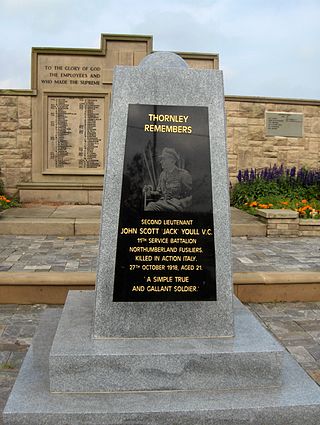
Second Lieutenant John Scott Youll VC was a British Army officer and an English recipient of the Victoria Cross (VC), the highest and most prestigious award for gallantry in the face of the enemy that can be awarded to British and Commonwealth forces.
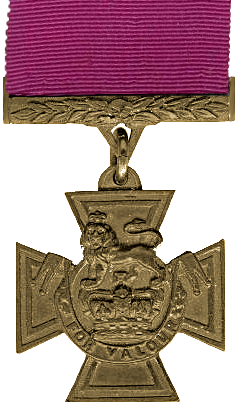
Joseph Edward Woodall VC was an English recipient of the Victoria Cross, the highest and most prestigious award for gallantry in the face of the enemy that can be awarded to British and Commonwealth forces.

Second Lieutenant John Schofield VC was an English recipient of the Victoria Cross, the highest and most prestigious award for gallantry in the face of the enemy that can be awarded to British and Commonwealth forces.
Ernest Seaman VC, MM was an English recipient of the Victoria Cross, the highest and most prestigious award for gallantry in the face of the enemy that can be awarded to British and Commonwealth forces. A soldier with The Royal Inniskilling Fusiliers, he was posthumously awarded the VC for his actions on 29 September 1918, during the Hundred Days Offensive of the First World War.

Percy Clyde Statton, was an Australian farmer, soldier, and a recipient of the Victoria Cross, the highest decoration for gallantry "in the face of the enemy" that can be awarded to members of the British and Commonwealth armed forces. Serving as a sergeant during the First World War, Statton was awarded the Victoria Cross in 1918 following his assault on four German machine guns. With three men, Statton rushed the posts armed with only a revolver and succeeded in capturing the first gun. Moving to the second, he killed the crew of five himself before the two remaining gun crews were forced to retreat.
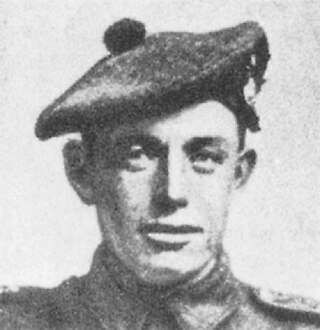
Thomas Caldwell VC was a Scottish recipient of the Victoria Cross, the highest and most prestigious award for gallantry in the face of the enemy that can be awarded to British and Commonwealth forces.
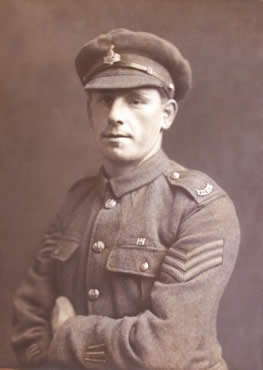
Sergeant William McNally VC, MM and Bar was a British Army soldier and an English recipient of the Victoria Cross (VC), the highest and most prestigious award for gallantry in the face of the enemy that can be awarded to British and Commonwealth forces.
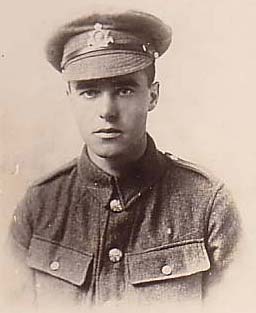
Harold John Colley VC MM was an English recipient of the Victoria Cross, the highest and most prestigious award for gallantry in the face of the enemy that can be awarded to British and Commonwealth forces.

Regimental Sergeant Major James Clarke VC was an English recipient of the Victoria Cross, the highest and most prestigious award for gallantry in the face of the enemy that can be awarded to British and Commonwealth forces.

Major Allan Ebenezer Ker VC was a British Army officer and a Scottish recipient of the Victoria Cross (VC), the highest and most prestigious award for gallantry in the face of the enemy that can be awarded to British and Commonwealth forces.
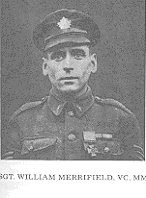
William Merrifield VC, MM was an English-born Canadian recipient of the Victoria Cross (VC), the highest and most prestigious award for gallantry in the face of the enemy that can be awarded to British and Commonwealth forces. A soldier with Canadian Expeditionary Force during the First World War, he was awarded the VC for his actions on 1 October 1918, during the Battle of the Canal du Nord. Earlier in the war he had been awarded the Military Medal.

William Henry Johnson was an English recipient of the Victoria Cross, the highest and most prestigious award for gallantry in the face of the enemy that can be awarded to British and Commonwealth forces.
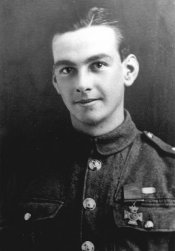
Company Quartermaster Sergeant Norman Harvey VC was a British Army soldier and an English recipient of the Victoria Cross, the highest and most prestigious award for gallantry in the face of the enemy that can be awarded to British and Commonwealth forces. He re-enlisted in World War II and was killed in action.
Sergeant Harold Jackson VC was a British Army soldier and an English recipient of the Victoria Cross (VC), the highest and most prestigious award for gallantry in the face of the enemy that can be awarded to British and Commonwealth forces. A soldier with the East Yorkshire Regiment, he was awarded the VC for his actions in March 1918, during the German spring offensive of the First World War. He was killed in action five months later.

Herman James Good was a soldier in the Canadian Expeditionary Force during the First World War and a recipient of the Victoria Cross, the highest award for gallantry "in the face of the enemy" that can be awarded to British and Commonwealth forces. Good received the award for his actions during the Battle of Amiens in August 1918, while fighting around Hangard Wood. Good survived the war and returned to Canada. After his discharge from the military in 1919, Good worked in the lumber industry and then later as a fish and game warden. He died of a stroke in 1969, at the age of 81.

Sergeant Charles Graham Robertson VC MM was an English recipient of the Victoria Cross, the highest and most prestigious award for gallantry in the face of the enemy that can be awarded to British and Commonwealth forces.

Lieutenant John O'Neill VC MM was a British Army officer and a Scottish recipient of the Victoria Cross (VC), the highest and most prestigious award for gallantry in the face of the enemy that can be awarded to British and Commonwealth forces.
Sergeant Thomas James Harris VC MM was a British Army soldier and an English recipient of the Victoria Cross (VC), the highest and most prestigious award for gallantry in the face of the enemy that can be awarded to British and Commonwealth forces.

Frank Lester VC was an English soldier in the British Army during the First World War, and recipient of the Victoria Cross, the highest and most prestigious award for gallantry in the face of the enemy awarded to British Commonwealth forces.













